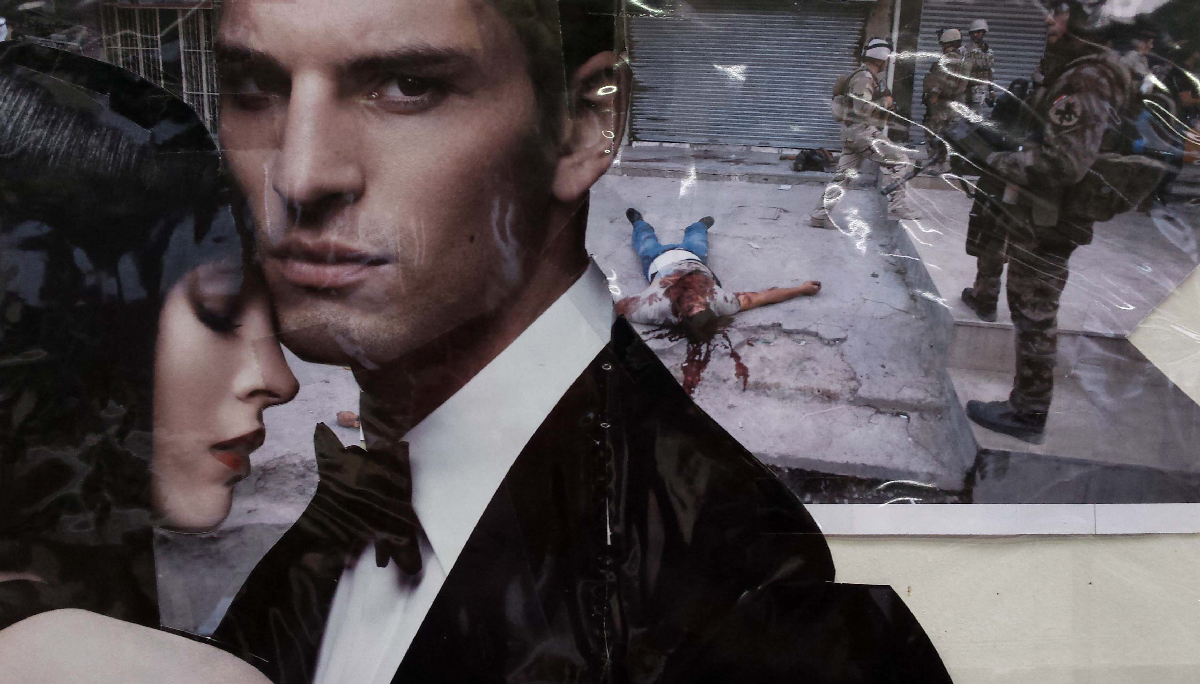With 3 “Easycollage” and 6 “Collage-Truth” , Thomas Hirschhorn transforms the “project room” of the MAN Museum into a provocative environment, full of suggestions and visual contrasts. The project, edited by Lorenzo Giusti , proposes a series of large-scale works, plus others of smaller format, created between 2012 and 2015, in which fashion photo shoots coexist with war images .
The sense of alienation and repulsion provoked by the vision of the collages is the weapon with which Hirschhorn conducts his battle against a simplified relationship with the image and against the tendency of mass media photography to focus on partial aspects of reality, which photography itself claims to capture, removing its nuances.
The imposition on sight of war-torn bodies and contextually of bodies idealized by advertising marketing, combinations apparently contrary to any logic of meaning and aesthetics, constitutes a conscious strategy, oriented towards the inversion of habituation/hypersensitization process induced by the media.
Thomas Hirschhorn’s works intend to stimulate the public to become aware of their own visual baggage, to come to terms with their own sensitivity, and to feel the need for elaborate critical thinking regarding the world of the media and, more generally, with respect to geopolitical reality and contemporary social conditions.
The project 3 “Easycollage” and 6 “Collage-Truth” develops the investigation path on collage as a tool for critical analysis carried out by Hirschhorn over the last few years. A research to which the artist combines both site-specific works, which respond to a precise desire for critical analysis of society (environments made mostly with poor materials and commonly used objects), and participatory operations, which involve a direct involvement of the public, as in the case of the projects in the “Presence and Production” series, such as “Deleuze Monument” (Avignon, 2000), “Bataille Monument” (Kassel, 2002), “24h Foucault” (Paris, 2004), “The Bijlmer Spinoza- Festival” (Amsterdam, 2009), “Gramsci Monument” (New York, 2013) and “Flamme éternelle” (Paris, 2014).
Thomas Hirschhorn (Bern, 1957), moved to Paris in 1983 after studying at the Schule für Gestaltung in Zurich. He has presented his works in numerous museums, galleries and international events, including the Venice Biennale (1999 and 2015), Documenta 11 (2002), the 27th Sao Paulo Biennial (2006), the 55th edition of the Carnegie International in Pittsburgh (2008), the Swiss Pavilion at the 2011 Venice Biennale, La Triennale at the Palais de Tokyo in Paris (2012), the 9th Shanghai Biennale (2012), the Gladstone Gallery New York (2012), Manifesta 10 in St. Petersburg ( 2014). His most recent work, “Flamme éternelle”, part of the “Presence and Production” project, was presented in 2014 at the Palais de Tokyo. MIT Press-October Books has published a selection of his critical writings ( Critical Laboratory: The Writings of Thomas Hirschhorn , 2013). Even more recent is the release of the book dedicated to the “Gramsci Monument” (published in 2015 by Dia Foundation and Koenig Books), a project that the artist developed in the Bronx of New York in 2013. He has received numerous awards: “Preis für Junge Schweizer Kunst” (1999), “Prix Marcel Duchamp” (2000), “Rolandpreis für Kunst im öffentlichen Raum” (2003), “Joseph Beuys-Preis” (2004) and the “Kurt Schwitters-Preis” (2011).


